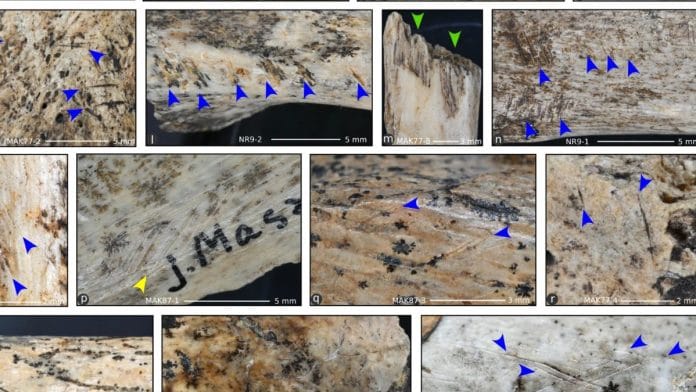New Delhi: Scientists have found evidence of human cannibalism among a group of prehistoric humans who lived in Europe more than 18,000 years ago. The Magdalenian group, as they are called, may have extracted and consumed the brain of their dead enemies, suggests a new study that was published in Scientific Reports earlier this month.
A team of scientists led by Francesc Marginedas of the Catalan Institute of Human Paleoecology and Social Evolution in Spain studied the human remains in the Maszycka Cave near Krakow in Poland, where human bones and tools as well as remains of Ice Age animals had been discovered in the 19th century. When they analysed the remains of 10 individuals—six adults and four children—they found cut marks and breakage which is “associated with the removal of the marrow in the long bones and brains in the skulls”.
“The cuts are associated with scalping,” wrote the researchers, adding that they also found evidence of defleshing and the removal of the ears. Little is known about the Magdalenian group group, but over the decades, studies on human remains in the cave point to ‘funeral’ traditions that include defleshing, disarticulation, and repurposing human bones for tools.
Past studies have shown how they used human bone as raw material to make skull cups and jewellery. “Some of these specimens bear decorative motifs or engravings added some time after the removal of the skin and flesh,” wrote the scientists in the paper. In fact, when the group was first studied, researchers had suggested cannibalism, but this was later rejected—until now.
Also Read: Search for an Indian Carl Sagan is on. Science influencers are being trained in labs and likes
Warfare cannibalism
The body was butchered soon after death, without allowing time for natural decomposition. Similar to processing of animal carcasses, the human body was butchered with the purpose to extract meat, viscera (internal organs) and marrow.
“The good state of preservation of the remains has allowed us to accurately document human activity, which was identified in over half of the studied specimens,” read the study. The precise nature of the cuts also suggest that this was not the work of scavengers
The Magdalenian group most likely performed these practices on ‘outsiders’, which scientists call exocannibalism. The scientists arrived at this conclusion by analysing the genetic remains found in the cave. None of the evidence can tell the story of whether this was done with respect, compassion or hatred. Emotions are archaeologically invisible, but they can be inferred through contextual clues.
For instance, some of the burial remains had offerings suggesting love and respect. But other human remains had been cut and found mixed with the waste of other consumed animals, suggesting lack of respect and empathy.
According to the researchers, after the Last Glacial Maximum—when Earth had the most ice during the last Ice Age—the population grew and expanded towards territories of central Europe. This eventually led to groups competing for resources, thereby increasing the chances of war. Magdalenian cannibalism could be part of this warfare.
“Several factors support the possibility of warfare cannibalism amongst Magdalenian groups, which may provide an explanation for the manipulation, high fragmentation and scattered remains found at these sites,” wrote the scientists.
Even though cannibalism wasn’t a daily practice or even uniformly practised during the Magdalenian culture, it was also not seen as something unusual in central Europe.
It suggests that the practice was not “particularly extraordinary”.
(Edited by Radifah Kabir)
Also Read: Indian science communicators are fighting for freedom from jargon. Scientists push back






